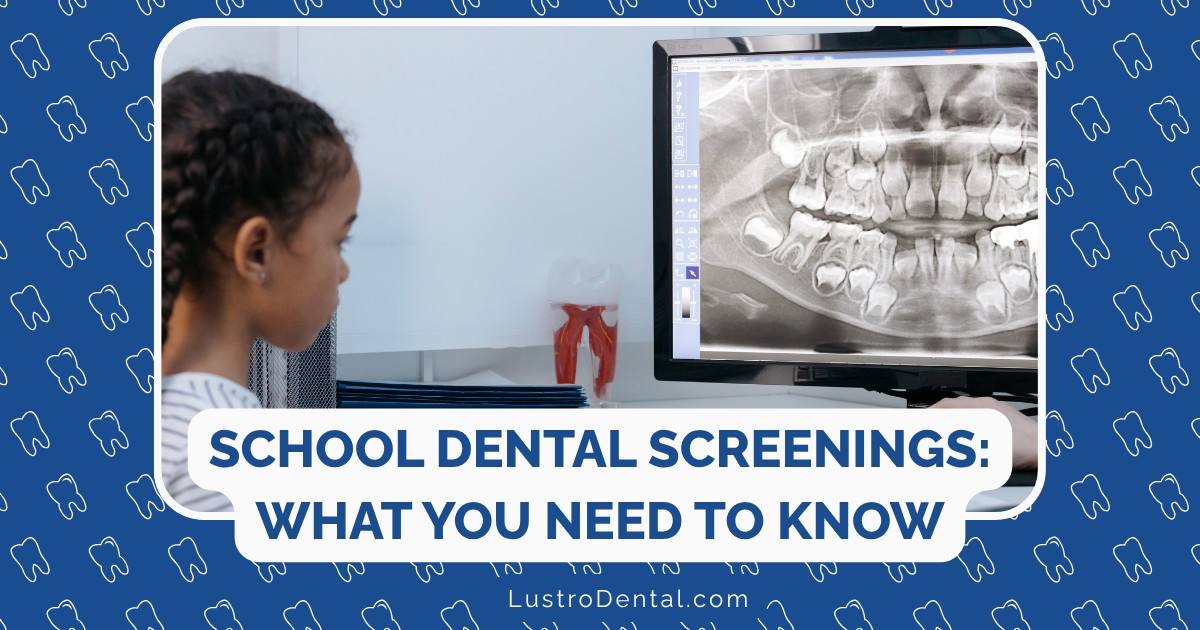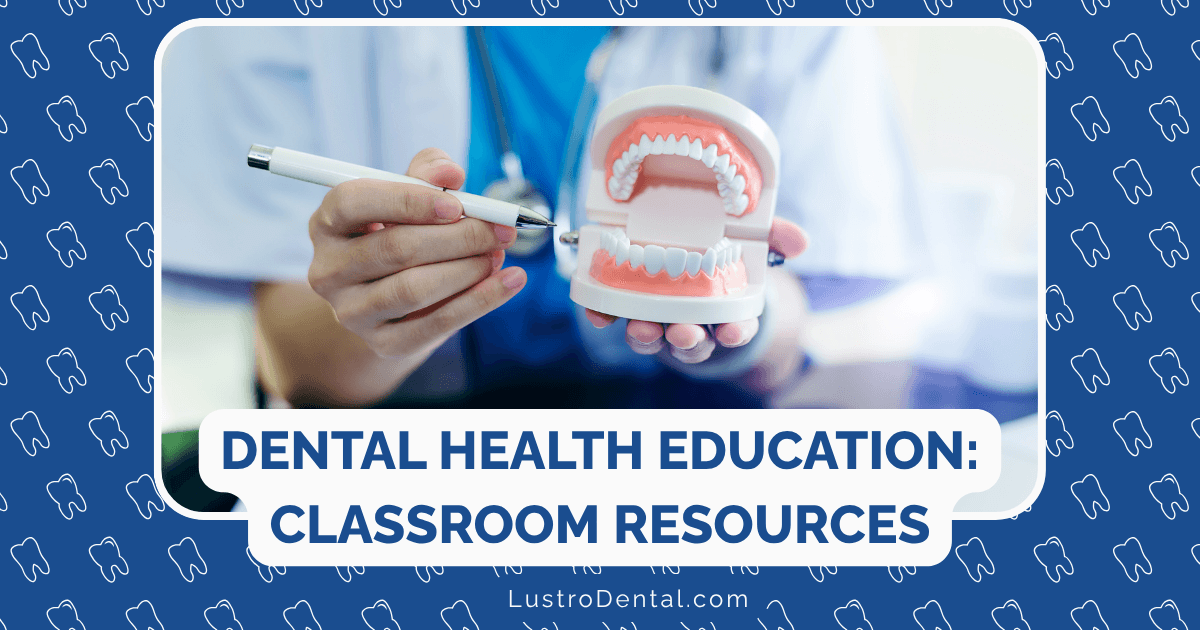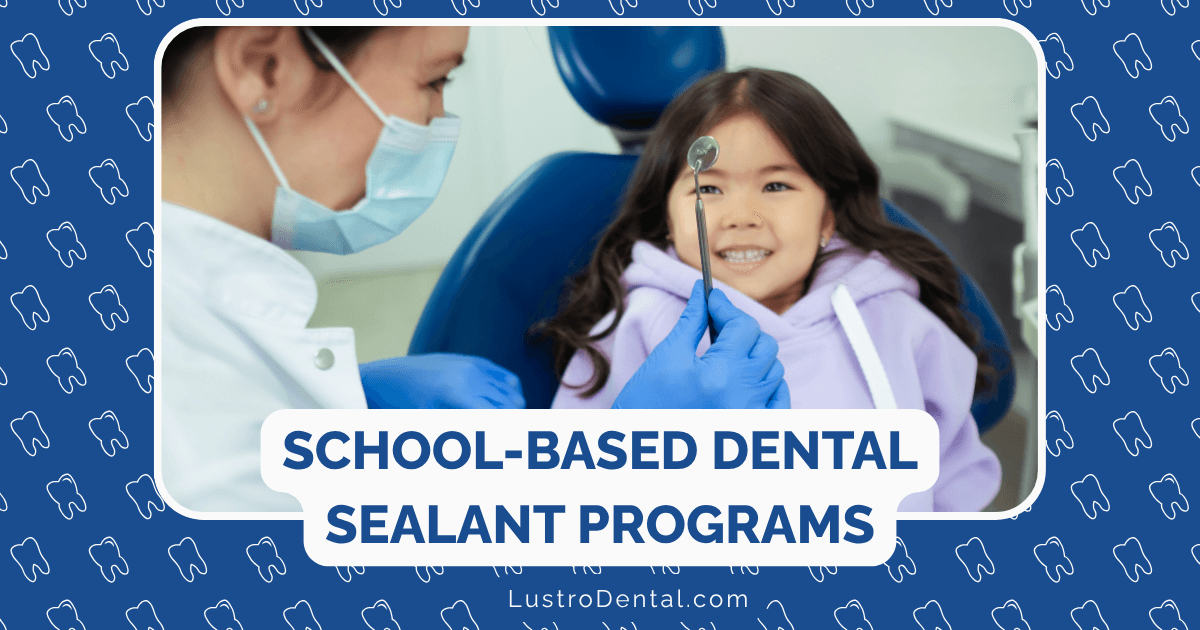What Parents Should Know About School Dental Screenings

When your child brings home a permission slip for a school dental screening, you might wonder: What exactly is this? Is it necessary? What happens during the screening? And what should you do with the results?
School dental screenings are becoming increasingly common across the United States as part of efforts to improve children’s oral health and address barriers to dental care. These screenings can play an important role in identifying dental issues early, but many parents have questions about the process and its implications.
This comprehensive guide will help you understand everything you need to know about school dental screenings—from what they entail to your rights as a parent and how to follow up on the results.
What Are School Dental Screenings?
School dental screenings are basic visual assessments of a child’s oral health conducted in the school setting. Unlike a comprehensive dental examination at a dentist’s office, these screenings are quick evaluations designed to identify obvious dental problems that might require attention.
Dr. Sarah Johnson, pediatric dentist at Kokua Smiles, explains: “School dental screenings serve as an important public health tool to identify children with untreated dental disease who might otherwise go unnoticed. They’re not meant to replace regular dental visits but rather to catch problems early and connect families with needed care.”
Key Characteristics of School Dental Screenings:
- Brief: Typically last only 1-2 minutes per child
- Non-invasive: Usually involve only visual inspection with a light and mirror
- Focused: Look primarily for obvious decay, infection, or pain
- Educational: Often include basic oral health education
- Referral-oriented: Designed to connect children with needed dental care
Why Schools Conduct Dental Screenings
Schools implement dental screening programs for several compelling reasons:
1. Address a Critical Public Health Need
- Tooth decay is the most common chronic childhood disease—5 times more common than asthma
- An estimated 51 million school hours are lost annually due to dental-related illnesses
- Poor oral health has been linked to decreased school performance and attendance
2. Reduce Barriers to Care
- Many children lack access to regular dental care due to financial constraints, transportation issues, or lack of dental insurance
- School-based programs reach children where they already are
- Early identification can prevent more serious and costly dental problems
3. Meet State Requirements
Many states now mandate dental screenings or examinations for children at specific grade levels:
- Illinois requires dental exams for kindergarten, 2nd, 6th, and 9th grade students
- California requires an oral health assessment for children entering public school for the first time (kindergarten or first grade)
- New York, Kentucky, West Virginia, and Oregon have similar requirements
- As of 2025, only 15 states and the District of Columbia require dental screening for students, but this number is growing
What Happens During a School Dental Screening
Understanding what occurs during a school dental screening can help ease any concerns you or your child might have:
Before the Screening
- Permission forms: Schools send home consent forms explaining the screening process
- Scheduling: Schools coordinate with dental professionals and notify parents of screening dates
- Preparation: Children receive age-appropriate explanation of what will happen
During the Screening
- Setting: Screenings typically occur in the school nurse’s office, gymnasium, or another designated area
- Personnel: Licensed dental professionals (dentists, dental hygienists, or in some states, specially trained dental assistants) conduct the screenings
- Procedure:
- The child sits in a regular chair or portable dental chair
- The dental professional uses a disposable mirror and light to look at the child’s teeth and gums
- No X-rays are taken, and no dental instruments enter the child’s mouth beyond the mirror
- The professional checks for obvious decay, infection, pain, or other concerns
- The entire process typically takes 1-2 minutes
After the Screening
- Documentation: Results are recorded on a standardized form
- Notification: Parents receive information about the findings, typically sent home with the child
- Referrals: If issues are identified, parents receive recommendations for follow-up care
- Data collection: Anonymous, aggregated data may be collected for public health monitoring
Dr. Michael Chen of University of California San Francisco Oral Health Program notes: “The screening process is designed to be quick and comfortable for children. Dental professionals are experienced in working with children and making the process as stress-free as possible.”
Types of School Dental Programs
School dental programs vary widely across districts and states. They generally fall into three categories:
1. Basic Screening Programs
- Visual-only assessments to identify obvious problems
- No treatment provided
- Referrals made for children needing care
2. Preventive Service Programs
- Include basic screening plus preventive services
- May offer fluoride varnish applications
- May provide dental sealants for eligible children
- Still require referrals for restorative treatment
3. Comprehensive School-Based Dental Programs
- Some schools host more comprehensive dental clinics
- May provide basic restorative care (fillings)
- Require more extensive parental consent
- Often partner with community dental providers
According to the National Association of School Nurses, approximately 75% of school-based oral health programs focus on screening and prevention rather than comprehensive treatment.
What Dental Screenings Can (and Cannot) Detect
It’s important to understand the capabilities and limitations of school dental screenings:
What Screenings Can Typically Identify:
- Obvious tooth decay: Visible cavities in teeth
- Dental emergencies: Infections, abscesses, or severe pain
- Gum inflammation: Obvious signs of gingivitis
- Missing teeth: Patterns that might indicate premature tooth loss
- Gross orthodontic issues: Severe crowding or misalignment
- Candidates for sealants: Children who might benefit from preventive sealants
What Screenings Cannot Typically Identify:
- Early decay: Cavities between teeth or in early stages
- Root problems: Issues below the gum line
- Detailed orthodontic needs: Comprehensive assessment of alignment issues
- Developmental issues: Subtle problems with dental development
- Oral cancer: Comprehensive oral cancer screening
Dr. Emily Rodriguez, public health dentist, emphasizes: “School dental screenings are not a replacement for comprehensive dental exams. They’re a safety net to catch obvious problems and connect children with dental homes for regular, ongoing care.”
Your Rights as a Parent
Parents have specific rights regarding school dental screenings that are important to understand:
Right to Information
You have the right to:
- Receive clear information about the screening process
- Know who will be performing the screening
- Understand how results will be used and shared
- Be informed about follow-up options
Right to Consent or Decline
In most states and districts:
- Participation is voluntary
- Written parental consent is required before screening
- You can opt out without penalty to your child
- Your decision should be respected without question
Right to Privacy
Your child’s information is protected:
- Results are typically shared only with parents/guardians
- Schools must maintain confidentiality of health information
- Aggregated, anonymous data may be collected for public health purposes
- Individual identifiable information requires specific consent for sharing
Right to Follow-Up Information
If issues are identified, you have the right to:
- Receive clear explanation of findings
- Get information about recommended next steps
- Access resources for finding dental care
- Request clarification if needed
Understanding Screening Results
When you receive your child’s screening results, you’ll typically see one of these categories:
1. No Obvious Problems Detected
- No visible signs of dental disease
- Continue regular dental check-ups (twice yearly recommended)
- Maintain good home oral hygiene
2. Early Dental Care Recommended
- Minor issues detected that aren’t urgent but need attention
- Schedule a dental appointment within the next few months
- May include early decay, mild gingivitis, or minor alignment concerns
3. Urgent Dental Care Needed
- Serious issues requiring prompt attention
- Schedule a dental appointment as soon as possible
- May include infection, abscess, severe decay, or pain
- Some schools provide additional follow-up for urgent cases
Dr. Lisa Patel, school dental program coordinator, advises: “Take screening results seriously, especially if urgent care is recommended. Early intervention can prevent pain, more extensive treatment, and missed school days.”
Following Up After a Screening
If your child’s screening indicates dental needs, here are steps to take:
1. If Your Child Already Has a Dentist
- Schedule an appointment, mentioning the school screening findings
- Bring the screening form to the appointment
- Discuss preventive strategies to address identified issues
2. If Your Child Doesn’t Have a Regular Dentist
- Use referral resources provided by the school
- Contact your dental insurance provider for in-network options
- For children without insurance, explore:
- Community health centers with dental services
- Dental schools that provide reduced-cost care
- State Children’s Health Insurance Program (CHIP) dental coverage
- Medicaid dental benefits (coverage varies by state)
3. Return Verification Forms
Some school programs request verification that follow-up care was received:
- Complete any required forms after your child’s dental visit
- Return forms to the school as requested
- This helps programs track their effectiveness
Benefits of School Dental Screenings
Research has shown several benefits from school dental screening programs:
For Children:
- Early intervention: Problems caught before they become painful or serious
- Reduced barriers: Access to basic dental assessment regardless of family resources
- Health education: Learn about importance of oral health
- Reduced stigma: Normalize dental care as part of overall health
For Families:
- Awareness: Increased knowledge about child’s oral health status
- Connection to care: Help finding dental resources if needed
- Prevention focus: Emphasis on avoiding future problems
- Convenience: Basic assessment without taking time off work
For Communities:
- Public health data: Better understanding of children’s oral health needs
- Resource allocation: More effective targeting of dental health programs
- Health equity: Reaching underserved populations
- Economic benefit: Prevention is less costly than emergency treatment
Supporting Your Child’s Dental Health Beyond Screenings
School dental screenings are just one component of maintaining your child’s oral health. Here are additional steps to ensure a healthy smile:
Establish Regular Dental Visits
- First dental visit by age 1 or within 6 months of first tooth
- Regular check-ups every 6 months thereafter
- Establish a “dental home” for consistent care
Promote Good Home Care Habits
- Supervise brushing twice daily with fluoride toothpaste
- Help with flossing once daily (typically needed until age 8-10)
- Limit sugary snacks and drinks
- Encourage water as the primary beverage
Reinforce Positive Attitudes About Dental Care
- Use positive language about dental visits
- Avoid sharing your own dental anxieties
- Celebrate good check-ups
- Frame dental care as an important part of growing up healthy
Advocate for Oral Health at School
- Support school water bottle policies that encourage hydration
- Advocate for healthy school food options
- Volunteer for oral health education events
- Support continued funding for school dental programs
Conclusion: Making Informed Decisions
School dental screenings represent an important public health approach to improving children’s oral health. They serve as a safety net to identify problems and connect children with needed care, but they don’t replace comprehensive dental visits.
As a parent, you’re empowered to make informed decisions about your child’s participation in these programs. Understanding what screenings involve, your rights in the process, and how to follow up on results allows you to be an effective advocate for your child’s oral health.
Remember that good oral health is integral to your child’s overall health and academic success. By addressing dental issues early—whether identified through school screenings or regular dental visits—you’re helping to ensure your child can learn, play, and grow without the burden of preventable dental problems.
Resources for Parents:
- American Academy of Pediatric Dentistry – Information on children’s oral health
- InsureKidsNow.gov – Help finding dental insurance for children
- National Association of School Nurses – Information on school health programs
- American Dental Association’s MouthHealthy Kids – Kid-friendly oral health resources
Has your child participated in a school dental screening? Share your experience in the comments below to help other parents navigate this process.







